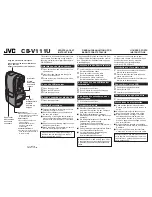
6-2
Cisco Unified Communications Manager Configuration Guide for the Cisco TelePresence System
OL-21851-01
Chapter 6 Setting Up the Room to Use Cisco TelePresence Manager
Configuring Microsoft Messaging Software for Cisco TelePresence Manager
Configuring Microsoft Messaging Software for
Cisco TelePresence Manager
This section describes how to set up the Microsoft Outlook messaging software to be able to receive
meeting reminders in the CTS environment, which allows users to connect to a remote meeting site with
the touch of a button.
To enable these features, you must provide the Cisco TelePresence Manager with the contact and access
information it requires to work with your network. This section contains the following tasks:
•
Prerequisites, page 6-2
•
Configuring Microsoft Exchange for CTS Manager, page 6-4
•
Migrating Microsoft Exchange Servers, page 6-9
Prerequisites
Before you proceed with CTS-Manager installation, the servers and applications within your
telecommunications network must be configured so that Cisco TelePresence Manager can find the
resources and information needed to initialize the installation. These servers and applications may
include one or more of the following:
•
Your Cisco TelePresence System endpoints should be fully installed and configured before installing
Cisco TelePresence Manager.
•
Cisco Unified Communications Manager (Version 7.1.3 or later) should already be installed and
configured.
The following versions are supported by Cisco TelePresence Manager 1.7.0:
•
LDAP:
–
Active Directory 2003 SP2, 2008 (32 bit and 64 bit versions).
–
Domino Directory 7.0.x, 8.0, 8.5. Only supported for Domino Calendar server deployments.
CTS-Manager LDAP user and system administrator need read permission to the Domino
Directory.
Note
Active Directory is NOT supported for Domino Calendar server deployment with CTS-Manager
•
Domain Name System (DNS)—To ensure full feature functionality, Cisco TelePresence Manager
must be configured and connected to a DNS server and your network.
•
Microsoft Exchange:
–
Microsoft Exchange versions 2003 SP2, Exchange 2007 SP1, Exchange 2007 SP2, Exchange
2010—Versions:
-8.0.685.25
-08.00.0685.018
-08.00.10685
-08.01.0
-08.1.240.5
-08.1.240.6
















































